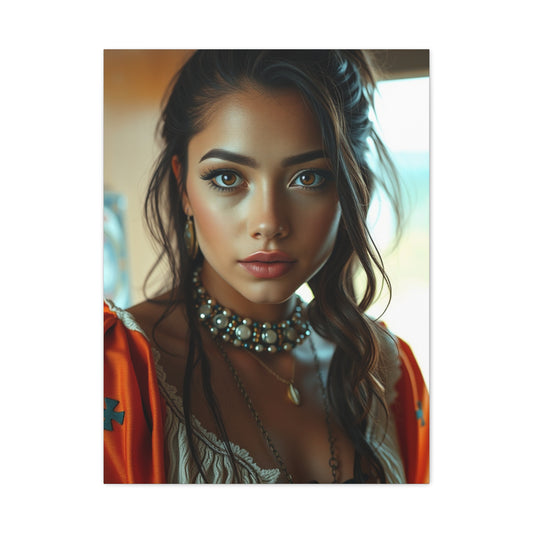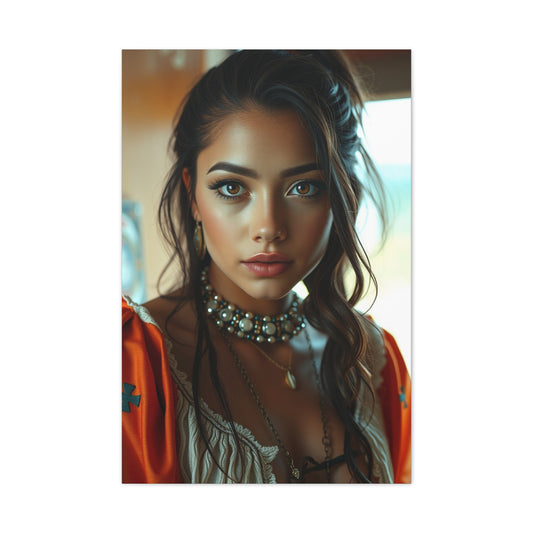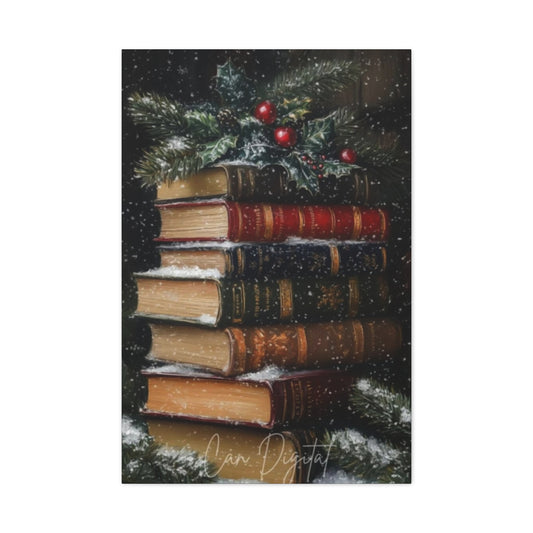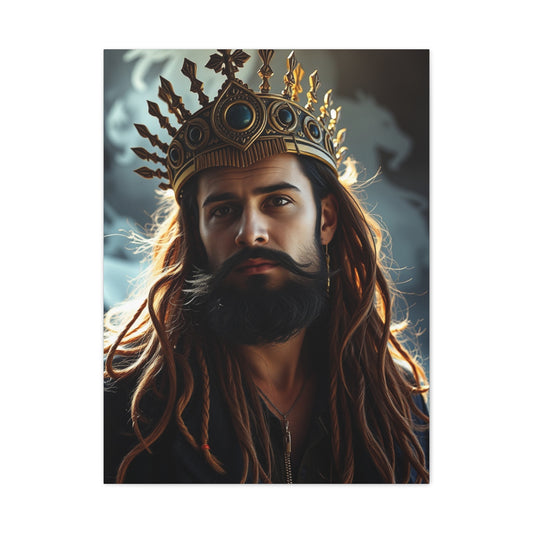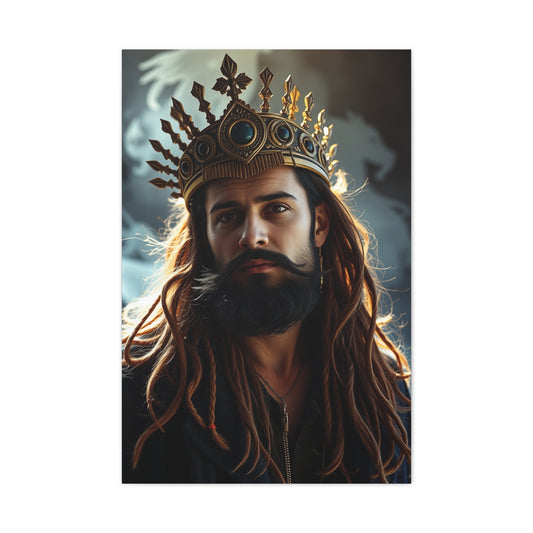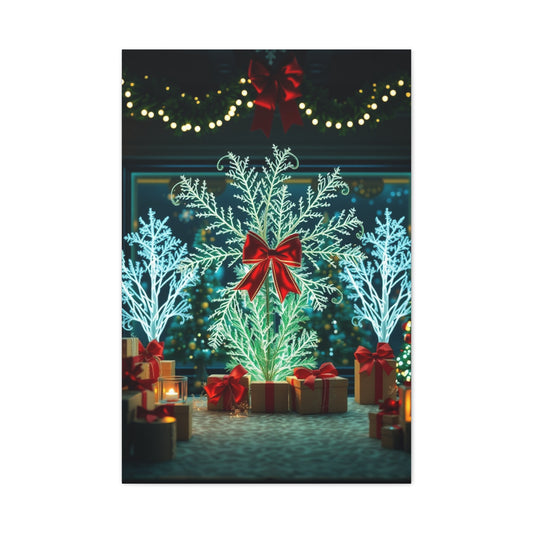Worm's eye view photography is an exciting and accessible technique that opens up a world of creative potential for photographers. This style, which involves shooting from a very low angle or directly upwards, transforms everyday scenes into something dramatic and unique. Whether you’re photographing architecture, nature, or even people, worm's eye view offers a fresh perspective that can make your subjects appear grand and impressive. This approach can add a sense of scale, depth, and visual intrigue to your shots.
For beginners, experimenting with worm's eye view photography can be a simple yet effective way to expand your skill set. This photography style allows you to break away from conventional angles, offering an opportunity to see the world differently and capture images that stand out. Below, we’ll explore what worm’s eye view photography is, how to take effective shots, and tips to help you make the most of this technique.
What is Worm’s Eye View Photography?
Worm’s eye view photography is essentially a perspective technique where you take your shot from a very low angle, often looking up at subjects. It’s the opposite of bird’s eye view photography, where the camera is aimed straight down from above. In a worm's eye view, you might find yourself positioning your camera directly on the ground or looking up at tall buildings, trees, or any other towering subjects.
This perspective can be especially powerful when shooting objects that have height or depth, making them appear more imposing and dramatic. For example, photographing a skyscraper from below can make it look more majestic, giving the viewer a sense of awe. Similarly, a worm's eye view shot of a tall tree in a forest can emphasize its towering presence, adding a sense of power to a natural scene.
The beauty of worm's eye view photography lies in how it challenges the viewer’s usual perspective. The unconventional angle adds depth and ground-level context to your images, making them feel more tangible and real. It's a great technique for storytelling, as it allows you to evoke emotions or highlight certain aspects of your subjects that would otherwise be unnoticed in a typical shot.
Tips for Capturing Stunning Worm’s Eye View Photos
To capture effective worm’s eye view shots, you need to get creative with your camera positioning and settings. Here are five essential tips to help you improve your worm’s eye view photography:
1. Mastering Manual Settings for Optimal Light Control in Worm’s Eye View Photography
In worm’s eye view photography, one of the key challenges is managing light, particularly because you often find yourself pointing your camera directly upwards towards bright skies, open spaces, or sunlit buildings. These conditions can overwhelm your camera’s sensor with too much light, causing overexposure and washed-out images. To combat this, mastering manual camera settings is crucial for getting the most out of your shots and capturing the dynamic, dramatic effect that worm’s eye view photography is known for.
|
Related Catagories: |
While automatic settings can be convenient, they often fail to handle complex lighting conditions effectively, which is why switching to manual mode gives you full control over exposure, aperture, and ISO. By adjusting these settings, you can ensure that your shots are properly exposed, sharp, and free from unwanted light artifacts. This article will break down how to master manual settings for optimal light control in worm’s eye view photography and ensure that you consistently capture compelling, high-quality images.
Understanding Light in Worm’s Eye View Photography
Before diving into the manual settings, it’s important to understand why light control is especially critical in worm’s eye view photography. When shooting from a low angle and looking upwards, your lens is often directed at bright elements such as the sky, tall buildings, or direct sunlight. This can cause the camera’s automatic settings to incorrectly adjust for the light, resulting in underexposed or overexposed photos. Overexposure happens when too much light hits the sensor, washing out the details, especially in the sky or light-colored areas. Conversely, underexposure can occur when the camera compensates for the bright background by darkening the rest of the scene.
In manual mode, you can make precise adjustments to the exposure settings to achieve the correct brightness and contrast in your image. Understanding how to adjust your settings effectively allows you to capture stunning worm’s eye view shots that convey depth, drama, and clarity, regardless of the lighting challenges.
Exposure: The First Step in Controlling Light
Exposure refers to the amount of light that reaches your camera’s sensor during the exposure time. Achieving proper exposure is crucial to ensure your images are neither too dark nor too bright. In worm’s eye view photography, exposure can be tricky because of the variation in light levels within the frame. The sky might be extremely bright while the foreground, such as a tree or building, could be much darker. This creates a high contrast between light and shadow, and without proper exposure control, you could lose detail in either the highlights or shadows.
To get the exposure just right, you need to adjust three key settings: aperture, ISO, and shutter speed. These three elements work together in what is commonly known as the "exposure triangle." By balancing these settings, you can ensure that light is distributed evenly across your shot, enhancing the depth and richness of your worm’s eye view composition.
Aperture: Controlling Light and Depth of Field
Aperture is the opening in your lens through which light passes to reach the camera sensor. It is one of the most powerful tools for controlling light, and it also affects your depth of field—how much of the image is in focus. Aperture is measured in f-stops, with smaller f-stop numbers (such as f/2.8) allowing more light to enter the lens, and larger f-stop numbers (such as f/8 or f/11) restricting the light.
When shooting worm’s eye view photos, it’s essential to find the right balance between aperture and exposure. For bright, sunny days, an aperture of f/8 to f/11 is ideal. This range will help you control the light entering the camera, preventing overexposure from the bright sky while ensuring sufficient depth of field. When shooting in low light, you may need to open the aperture wider (i.e., lower the f-stop) to let more light into the camera. f/2.8 or f/4 can help you capture more detail in darker conditions without sacrificing too much clarity.
The aperture you choose will also affect your depth of field. A wide aperture (like f/2.8) creates a shallow depth of field, which can be beneficial for focusing on a specific subject while blurring the background. For worm’s eye view photography, you may want to use a wider aperture when photographing subjects such as flowers, statues, or smaller architectural details. On the other hand, narrower apertures (like f/8 or f/11) are better for wide landscape shots or tall structures where you want the entire scene to remain in focus.
ISO: Adjusting Sensitivity to Light
ISO determines your camera’s sensitivity to light. A lower ISO (such as ISO 200 or 400) will result in cleaner images with less noise, but may require slower shutter speeds or wider apertures in low light conditions. A higher ISO (like ISO 800 or 1600) makes your camera more sensitive to light, allowing for faster shutter speeds, but at the cost of introducing more grain or noise into the image.
For worm’s eye view photography, the ideal ISO setting will depend on the lighting conditions. On sunny days or when shooting outdoors, a lower ISO setting (between ISO 200 and 400) is usually sufficient to maintain image quality without introducing too much noise. However, when shooting in darker conditions, such as in a forest canopy or at dusk, you may need to raise your ISO to ISO 800 or higher to avoid underexposure.
When adjusting ISO, remember that noise becomes more noticeable as the ISO value increases, so it’s essential to find a balance between sensitivity and image clarity. In general, try to keep your ISO as low as possible while still achieving the correct exposure for your scene.
Shutter Speed: Freezing Motion and Preventing Camera Shake
Shutter speed is the amount of time the camera’s shutter remains open, allowing light to reach the sensor. A faster shutter speed (like 1/500s) allows less light to enter the sensor but can freeze fast-moving subjects, which is especially helpful in action shots. On the other hand, a slower shutter speed (like 1/60s) lets in more light but can cause motion blur if the subject is moving or if the camera shakes.
When photographing with a worm’s eye view perspective, you’ll often be shooting upwards towards the sky or at tall objects, which can result in camera shake if you're shooting handheld. To avoid this, use a fast shutter speed (around 1/500s or faster) to ensure sharp, clear shots. If you’re using a wide aperture for low-light shooting, you may need to balance this with a slightly slower shutter speed (around 1/250s) while maintaining a steady hand or using a tripod.
In low light conditions, you may need to lower your shutter speed to allow more light into the camera. However, slower shutter speeds can lead to blur, especially when shooting handheld. To counter this, either use a tripod or monopod to stabilize your camera, or use a remote trigger or your camera’s self-timer to minimize any movement when pressing the shutter button.
Bringing It All Together: Achieving Perfect Exposure
To achieve perfect exposure in your worm’s eye view photos, you’ll need to balance aperture, ISO, and shutter speed based on your shooting conditions. When shooting on a sunny day, aim for an aperture between f/8 and f/11, an ISO of 200-400, and a shutter speed around 1/500s. For low-light or evening shots, you may need to widen your aperture to f/2.8 or f/4, increase your ISO to 800 or 1600, and use a slower shutter speed (1/250s or slower) to allow more light to reach the sensor.
By carefully adjusting these settings, you can gain full control over your exposure, creating stunning and detailed worm’s eye view shots that capture both the grandeur and the subtleties of your subject. Experimenting with these manual settings will help you refine your technique, enabling you to handle even the most challenging lighting conditions with ease.
2. Experimenting with Different Lenses to Capture the Best Worm's Eye View Photography
Worm’s eye view photography is a striking technique that provides a unique and dramatic perspective of everyday scenes. Whether you’re shooting towering trees, intricate architectural designs, or expansive landscapes, the choice of lens can drastically alter how the final image is captured. Each lens type brings its own distinct effect, allowing photographers to experiment and create photographs that range from realistic to surreal. Understanding how different lenses affect perspective, depth, and the overall visual impact of your images is crucial when mastering worm’s eye view photography. In this guide, we’ll delve into three popular types of lenses—wide-angle, fish-eye, and telephoto—and explore how each can help you achieve the perfect shot for your worm’s eye view photography.
Wide-Angle Lenses: Expanding Your Perspective
Wide-angle lenses are some of the most common and versatile lenses used in worm’s eye view photography. These lenses typically range from 24mm to 35mm and provide a broader field of view, making them perfect for capturing large scenes or tall structures. The beauty of wide-angle lenses lies in their ability to emphasize scale and depth while maintaining a relatively natural perspective.
When photographing towering buildings or tall trees from below, wide-angle lenses allow you to capture the grandeur and majesty of your subject. These lenses excel in architectural photography because they help you fit more of the structure into the frame without distorting the perspective too much. For instance, if you're photographing a skyscraper, the wide-angle lens enables you to capture its full height while still keeping the proportions realistic. This is particularly useful when photographing objects that have significant verticality, as it prevents the “leaning” effect that may occur with telephoto lenses.
In landscape photography, wide-angle lenses are also invaluable for capturing expansive scenes. Whether you’re photographing a vast forest canopy, a sweeping vista, or a mountain range, the wide-angle lens allows you to include a large portion of the scene in your frame. This is essential in worm’s eye view shots, as it helps you highlight the relationship between the foreground and background. By including more of the surroundings, you can create a more dynamic and immersive image that emphasizes the scale and depth of the scene.
Fish-Eye Lenses: Adding a Surreal Twist
Fish-eye lenses are often considered the ultimate tool for creative and experimental photography. These ultra-wide-angle lenses create a distinctive distorted effect by bending straight lines and curving the edges of the frame. The result is an image with a highly exaggerated perspective that is unlike anything seen with a regular lens.
Fish-eye lenses are perfect for capturing worm’s eye view shots that go beyond the ordinary. If you’re photographing small, intricate details like flowers, plants, or architectural elements close to the camera, a fish-eye lens can make these objects appear larger and more exaggerated. This lens is ideal for photographers who want to create a sense of drama and wonder in their shots. The exaggerated curvature can make even mundane objects appear otherworldly, giving your images a unique and surreal aesthetic.
For example, when photographing flowers from below, the petals and leaves seem to stretch and curve, creating an abstract, dreamlike effect. In architectural photography, the fish-eye lens can warp the lines of a building, making the structure appear as though it’s bending toward the viewer. This is particularly effective when capturing the grandeur of a tall building or when looking up at a skyscraper. The fish-eye effect can add an artistic twist to your worm’s eye view shots, transforming everyday scenes into visually captivating works of art.
However, it’s important to note that fish-eye lenses introduce significant distortion, so they may not always be suitable for every scene. If you’re looking for a more realistic or natural representation of your subject, a wide-angle or telephoto lens might be more appropriate. But for those willing to embrace a more unconventional look, fish-eye lenses offer endless creative possibilities.
Telephoto Lenses: Creating Dramatic Perspective and Compression
Telephoto lenses are commonly used in photography to capture distant subjects with great detail and clarity. When applied to worm’s eye view photography, telephoto lenses offer a unique ability to compress the perspective, making objects appear closer and more imposing than they are in reality.
Telephoto lenses typically have a focal length of 70mm or more and are ideal for shooting subjects that are far away. In worm’s eye view photography, this means you can capture towering buildings or distant landscapes from a low angle while making them appear even more monumental. For example, if you’re photographing a tall building in the distance, a telephoto lens can compress the foreground and background, making the building appear to dominate the entire frame. This compression creates a dramatic, powerful look that emphasizes the scale of your subject.
One of the major advantages of using a telephoto lens in worm’s eye view photography is the ability to isolate your subject from its surroundings. Because telephoto lenses have a narrow field of view, they allow you to focus tightly on specific details, such as the intricate features of a building or the top of a tree. This helps to highlight the subject’s importance while minimizing distractions from the background.
However, telephoto lenses do come with certain challenges when used in worm’s eye view photography. Due to their narrow field of view, you may need to position yourself further from the subject to capture it properly. Additionally, telephoto lenses tend to have a shallow depth of field, meaning that the foreground and background may blur out more significantly than with wide-angle lenses. This effect can be used creatively to isolate subjects and focus the viewer’s attention on specific details, but it also requires careful composition to ensure that important elements are not lost in the blur.
3. Focus on Composition to Create Impactful Worm’s Eye View Photography
Composition is the backbone of any great photograph, and it becomes even more critical when working with worm’s eye view photography. When you shoot from such an unconventional angle, the way you arrange elements within the frame can drastically alter the outcome of the image. It’s no longer just about capturing the subject; it’s about creating a compelling story through your visual choices. Whether you're focusing on towering structures, majestic trees, or human subjects, composition will be the key to bringing your worm's eye view shots to life.
This unique perspective often means that your usual framing rules may need to be adapted. With worm’s eye view photography, the angle at which you shoot not only changes how we perceive the subject but also how we engage with it emotionally. The image may evoke feelings of awe or drama depending on how you compose the shot. In this guide, we’ll delve into the critical components of composition, from traditional techniques like the rule of thirds to exploring light, lines, and depth, and how these elements can make your worm’s eye view photography more dynamic and impactful.
Start with the Rule of Thirds for Balanced Composition
The rule of thirds is one of the most basic and essential principles of photography, and it plays a vital role in worm’s eye view photography. It involves dividing your frame into nine equal parts with two equally spaced horizontal lines and two vertical lines. The key is to place your subject or focal point at one of the intersections of these lines rather than directly in the center of the frame. This creates a more balanced and engaging composition, allowing the viewer’s eye to naturally follow the flow of the image.
When shooting from a worm’s eye view, especially when photographing tall objects such as skyscrapers, trees, or monuments, the rule of thirds can provide structure and guide your composition. For example, if you’re photographing a towering skyscraper, positioning the building slightly off-center, aligned with one of the vertical lines, will allow the lines of the building to lead the viewer’s eye upward, reinforcing the subject’s height. This technique enhances the sense of scale and grandeur and prevents the image from feeling too static or symmetrical.
Leading Lines: Harnessing the Power of Direction
In worm’s eye view photography, leading lines can be a powerful tool for creating movement and guiding the viewer’s eye toward the focal point of your shot. These lines can be naturally occurring in your environment, such as the straight edges of a building, a tree trunk, or the ridgelines of a mountain. They draw the viewer’s gaze into the frame, leading them toward the subject you want to emphasize, or they can serve to create an interesting visual flow.
For instance, when photographing a tall structure, such as a cathedral or a skyscraper, the lines of the building itself can act as natural leading lines. These lines direct the viewer’s gaze upward, amplifying the verticality of the structure. The same concept can be applied to natural subjects, like trees or mountain ridges. As you shoot from below, the tree trunks may form diagonal lines that lead the viewer’s eye toward the canopy or sky. This movement creates a dynamic element, which can make the composition feel more alive and engaging.
|
Related Catagories: |
You can also look for man-made elements or natural formations that create diagonal or converging lines. These can enhance depth and add a layer of intrigue, guiding the viewer to explore different parts of the image. Leading lines are especially important in worm’s eye view photography because they help organize the frame and add depth, preventing the shot from appearing cluttered or chaotic.
Patterns and Symmetry: Organizing Chaos into Harmony
Patterns and symmetry are highly effective compositional techniques in worm’s eye view photography. Objects captured from below can often create repetitive shapes and structures that can add a sense of order and visual interest. These patterns can range from natural formations, like tree branches or leaves, to architectural details such as windows, columns, or tile patterns. By emphasizing symmetry and repetition, you can craft an image that feels visually satisfying and balanced, even in the midst of seemingly chaotic scenes.
For example, when photographing a forest canopy from a worm’s eye view, the repetitive shape of the tree branches can create a beautiful pattern in the image. By aligning the tree trunks in a symmetrical arrangement, you can enhance the sense of order and balance, making the viewer appreciate the structure of the natural world. Similarly, when photographing a building from below, architectural elements like columns or windows often create repetitive shapes that can add a sense of rhythm to your composition.
It’s also worth exploring asymmetry in worm’s eye view photography. While symmetry can create a sense of harmony, asymmetry—such as photographing a single tree in an otherwise dense forest—can create tension, making the subject stand out. Both techniques can be powerful when used thoughtfully, depending on the emotional tone you want to set for the image.
Lighting and Shadows: Enhancing Mood and Drama
Lighting is an essential factor in any photograph, and worm’s eye view photography is no exception. When you shoot from a low angle, you gain the advantage of capturing dramatic lighting and long shadows that add a layer of emotion and atmosphere to your images. The way light interacts with your subject can significantly affect the mood, so it’s essential to pay attention to how light sources are positioned relative to the subject.
One of the best times to take advantage of dramatic lighting is during the golden hour, just after sunrise or just before sunset. During this time, the sun is lower in the sky, casting soft, warm light that creates long, exaggerated shadows. This low angle light helps accentuate the textures and details of your subject, whether it’s the rough bark of a tree, the smooth surface of a skyscraper, or the subtle contours of a monument. The resulting shadows can add depth and drama, making the image feel more three-dimensional and dynamic.
Shooting with light sources directly overhead, such as the midday sun or artificial lighting, can result in harsh, unflattering shadows. However, this type of light can also be used creatively to emphasize specific areas of your subject or to create stark, high-contrast silhouettes. For example, photographing a subject backlit by the sun from below can result in striking silhouettes, highlighting the subject's outline while obscuring the finer details. These dramatic contrasts can evoke a sense of mystery, strength, or solitude, depending on the context of the scene.
Filling the Frame: Enhancing Subject Presence and Focus
Another important aspect of composition in worm’s eye view photography is how you fill the frame. Since worm’s eye view shots often focus on towering or expansive subjects, it’s crucial to position your subject in a way that fills the frame and emphasizes its importance. This can be achieved by getting in close to the subject, ensuring that it occupies a dominant position in the shot.
For instance, when photographing a tall building or tree from below, consider getting close enough to fill the frame with the subject, allowing it to dominate the image. By eliminating distractions in the background and focusing solely on the subject, you can heighten the sense of scale and create a striking visual that grabs the viewer’s attention. If you're photographing a wide scene, such as a park or forest, think about how you can fill the frame with dynamic compositions that showcase the vastness of the space while still drawing attention to key elements.
This technique is especially useful when working with nature photography. A low-angle shot of flowers, leaves, or insects can be made more striking by filling the frame with the subject, giving it prominence and ensuring that every detail is captured in sharp focus.
4. Use a Tripod or Remote Trigger for Stability
Keeping your camera steady while lying on the ground or in an awkward position can be a challenge. To ensure sharp images, use a tripod or monopod to stabilize your camera. A tripod is particularly useful if you're planning to shoot long exposures or macro photography, as it helps eliminate any potential camera shake.
If you're unable to keep the camera steady even with a tripod, consider using a remote trigger or your camera's self-timer function. This helps prevent camera shake when you press the shutter button, ensuring the sharpest possible images.
Additionally, if you're shooting wildlife or other unpredictable subjects, a remote trigger allows you to snap the shot without disturbing the scene, giving you more flexibility and control over your composition.
5. Play with Depth of Field and Focus
Depth of field plays an important role in worm’s eye view photography, especially when you want to emphasize a particular element in your frame. Using a shallow depth of field can isolate your subject from the background, creating a beautiful bokeh effect and drawing the viewer's attention to the focal point.
For example, if you're shooting close-up shots of flowers or leaves, a shallow depth of field will allow you to focus on the intricate details of the subject while blurring the background. This technique works well for nature photography, where the textures of leaves, petals, or insects can be highlighted.
Alternatively, a wider depth of field is ideal for larger scenes, such as architecture or landscapes. It ensures that the entire frame remains in focus, giving your photo a more expansive and detailed look. For tall buildings, trees, or cityscapes, use a narrow aperture (such as f/8 or f/11) to keep everything sharp.
Conclusion: Embracing the Worm’s Eye View for Creative Photography
Worm’s eye view photography is an exciting and creative way to capture subjects from a fresh perspective. Whether you’re photographing buildings, nature, or people, this technique offers a unique approach that emphasizes scale, depth, and drama. By experimenting with different lenses, compositions, and manual settings, you can make the most of this technique to produce striking and original images.
As a beginner, worm’s eye view photography is a fantastic way to challenge your perspective and push the boundaries of your creativity. It encourages you to step outside the traditional framing and composition methods, leading to new, captivating photographs. Whether you’re shooting macro photos or capturing cityscapes, this approach can breathe new life into your photography portfolio.










